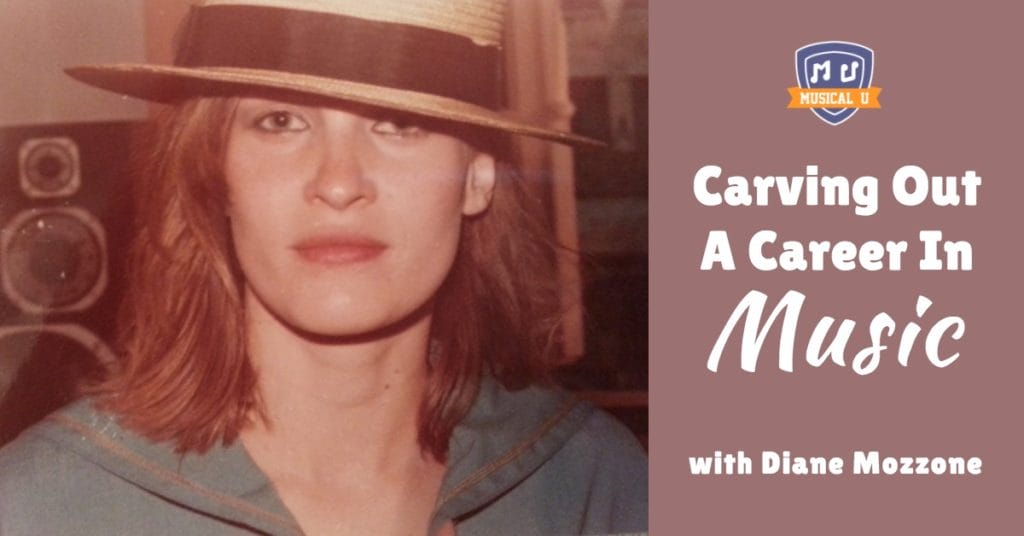People fall into music in all kinds of different ways.
For Diane Mozzone, her introduction to the world of music came from her upbringing in New York City, where she was exposed to the music scene in downtown Manhattan as a teenager. From there, it was a wild ride: having formed connections to the music industry through her modelling career, Diane began to write music, formed a band, learned the art of promoting herself, and began writing in a variety of styles solo. Many career and music industry-related revelations later, Diane is still writing prolifically today, now in the genre of nu metal.
All the while, her style has been informed by dance sensibilities, lyrical honesty, and a punk rock spirit.
Musical U talked with Diane about her experiences making music both solo and as part of a band in the New York scene of the 1980s, her songwriting process, the unique charm of CBGB, her love of metal, and how she found Musical U and is using it to evolve further as a songwriter.
Q: Hi Diane, and welcome to Musical U! Your career is so rich and multifaceted, but today let’s focus on the music aspect.
Let’s start from the beginning: how did you get involved in music?
When I attended Our Savior Lutheran School, in Queens, NY, I joined the Lutheran choir as an alto, and was placed in the boys section. It was from the hymnal that I learned a lot about ascending and descending notes on a staff, as well as harmonizing. Also, the dark melodies were to become a big influence later in my choice of musical genres.
The first time I got recognition from the public was while attending a benefit concert for patients at Elmhurst General Hospital in Queens in 1963. My mother was in the hospital for a long period, and on one of our family visits, a singer failed to show up.
The announcer asked the large audience if someone could perform a song for the band to fill in the spot. As I was always a lead singer to front my two soprano sisters on cover songs we sang in the house, they eagerly screamed out (pointing at me) “My sister can!” I looked at them and the audience, shocked! As I slowly approached the stage, looking around at the audience, the band leader asked me what I would like to sing. I replied, “Johnny Angel”, by Shelly Fabares:
The band knew the score well, so singing it was easy – it was just like my sisters and I rehearsed to the record at home! The applause was so great, and I was only 12 years old. I tell you, I got such satisfaction from the ordeal that I could have sung a hundred more songs. My early influences were the Everly Brothers, Dion, Paul Anka, and, most of all, Motown.
At 13 years of age, I went to the city every night and saw many concerts at the Village Theater, Fillmore East, Cafe au Go Go, Cafe Wha, Night Owl Cafe, and CBGB in Greenwich Village and the East Village. However, I didn’t sing again until I was 17, when my boyfriend heard me wailing to Grace Slick of Jefferson Airplane in the car. He asked me to front his Beatles cover band, but I really didn’t like the material. Still, I must say, the band was very good.
As a matter of record, my favorite influence in the 60’s was The Who. I loved the melodies, performance, and the loudness – these also became a large influence on my own musical sensibilities.
I am privileged to say that I’ve been a clubgoer since I was 14 years old. Nothing could keep me away from going out to Long Island to see bands like the Rascals and the Vagrants perform.
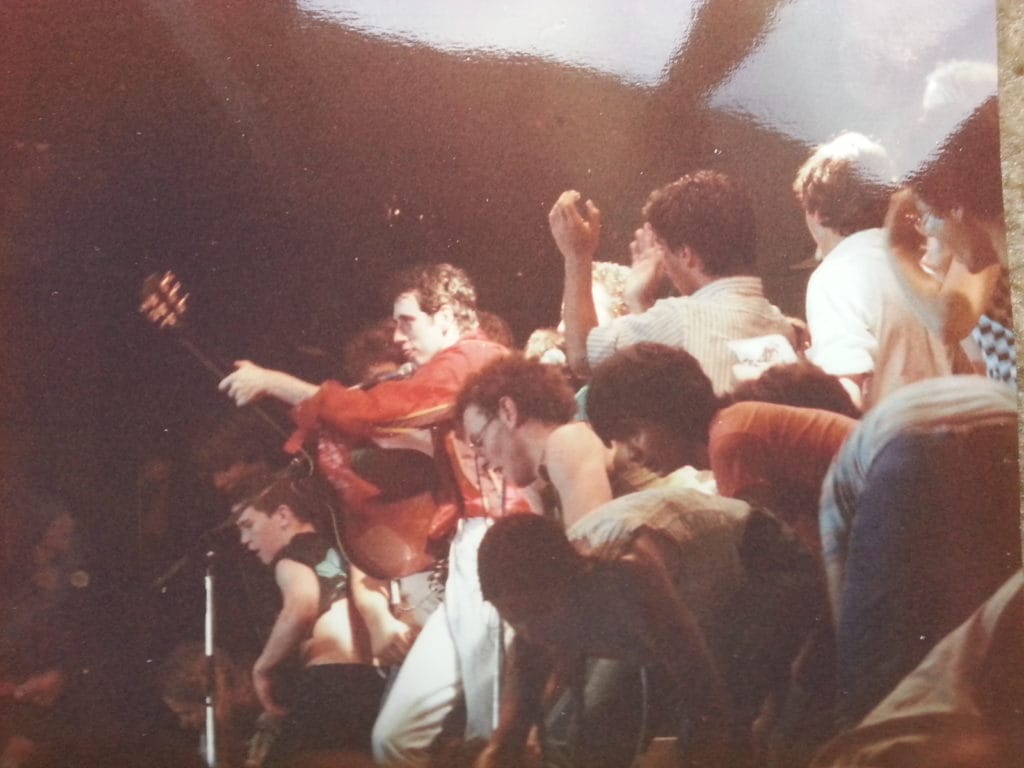
Every night, after seeing photographers, taking pictures, and visiting modeling agencies, my boyfriend and I would go out to the underground clubs. CBGB and Max’s Kansas City were two of the hottest.
At CBGB in particular, you could see any of the cool bands play, and even meet the members. Once, in that particular club, an enthusiastic slam dancer picked up a chair, flung it hard over his head backwards, and sent it crashing on my head.
Never a dull moment on the downtown music scene. It was partying every night. My biggest thoughts at that time were how to get creative with makeup and find original clothes to wear. After all, that’s how one got noticed.
In 1978, I landed a modeling contract at Foster-Fell Agency, N.Y.C. Within weeks, I was subcontracted to Miyami International in Tokyo, and then Universal Agency in Paris.
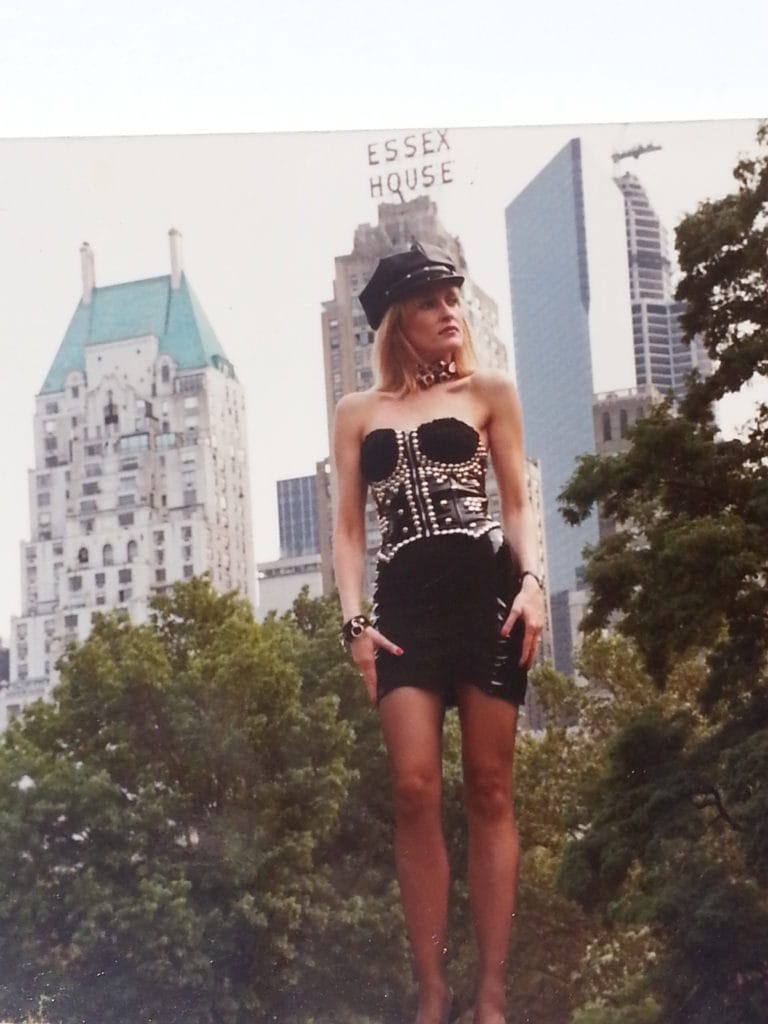 It was in those places that I met many famous bands including Van Halen, Elvis Costello, Peter Frampton, and even Bob Marley and his wife Rita. My modeling portfolio and luggage were covered with backstage passes. It’s amazing how models and musicians gravitate to each other.
It was in those places that I met many famous bands including Van Halen, Elvis Costello, Peter Frampton, and even Bob Marley and his wife Rita. My modeling portfolio and luggage were covered with backstage passes. It’s amazing how models and musicians gravitate to each other.
While I was overseas, Bruce Rey had started hanging out with Rosanna Ramone (Johnny Ramone’s first wife), and Tony Machine, who was the drummer for David Johansen of the New York Dolls. We decided when I stopped modeling, Bruce and I would form a band together, with him playing rhythm, accordion, and piano.
In 1980, Bruce and myself heard a sound that changed our lives: the Yamaha DX7! I bought one immediately, along with a new ebony Kawai piano, TEAC reel-to-reel, and countless effects boxes and pedals for vocals and guitar. The sky was the limit for melodies, sounds, and chord progressions. We really had it going on in that loft, writing punk and new wave music and lyrics, and entertaining fellow musicians. And, of course, hanging out in the downtown clubs to dance and meet people in the industry!
Having obtained a G.E.D. while working in engineering at New York Telephone Co., I decided to go back to school, and received a dance degree at Marymount Manhattan College. Along with the major courses, it was there that I honed my musical skills, taking classes in classical voice, piano, and music history to learn theory. I learned a lot about song structure.
Writing songs came easy for me, after learning about theory and structure. In the 80’s, I looked at my favorite bands’ music, such as Duran Duran and New Order, and studied their structure: for example, how many bars in the intro, verse, bridge and chorus?
In New York, the competition to get a record deal was unimaginable. You have to be original! That’s why I first think: how can I be original? Originality means new sounds, chord progressions, and melodies, and especially being careful not to plagiarize!
Currently, I do metal and nu metal music, and am influenced by bands such as The Offspring, System of a Down, Rage Against the Machine, Arch Enemy, Rob Zombie, Drowning Pool, and Metallica – these bands fire me up.
I write the lyrics first, picking a theme, whether it be society, or anger, or something else. I’m a hyper person, and they satisfy my need to let off steam. Then, I find chord progressions to set the mood of the lyrics. I can write in this genre all day, because as Joe Strummer (co-founder of The Clash) advised me to do… look in the news! I don’t expect everyone to agree with me, so I change the news to abstract lyrics. This way people can interpret them in any way they want. I also delve into ancient mythology to find original topics.
Dance has influenced my whole music career. As a modern dancer and teacher, I know how important discipline and hard work is to an artist. Also, knowing how to count beats is extremely important. Imagine singing for a band and not knowing the rhythm and the count! Band members would give up on you. You better know when to come in.
My intentions on doing music right from the beginning were to make sure it was dance music! That’s why I blend easily into goth, punk, Latin disco, house, and now metal. I like to use all styles of dance when I listen to music to be original. And if you can’t move to it, forget it!
I auditioned and got a gig at The Ritz doing backup vocals for a big band – 14 pieces in the style of Kool and the Gang. Notable here is the fact that everyone had a solo. Tony Machine (drummer, New York Dolls) brought his friends down, and a lot of A&R people came. The crowd was immense, and when the show was over, many people told me I was the best part of the act.
This led to a very pivotal point. I decided to be the leader of my own band, doing the music I wanted do.
I wrote four songs quickly, and Bruce picked them up on the rhythm guitar, so we started auditioning people immediately. Our first band, FOTO, was a mixture of a jazz-fusion rhythm section with punk guitar sounds and melodic vocals. Over a year, we recorded at least a hundred rehearsals on cassette, and before long, were ready to play CBGB, our old hangout!
I kept FOTO for 2 years. Then, Bruce and I started auditioning for other members, as I was losing my voice keeping on top of wailing guitars and fusion rhythms. We soon got a classical synth player, David Tannenbaum, and funky new wave bass player Brian Anderson. Our band became known as Miss Young. The sound was melodic synth pop, also known as Europop, New Wave, or Alternative. Our influences included Depeche Mode, The Cure, The Cars, The Smiths, Simple Minds, and especially New Order. We played A7, The Pyramid Club and other cool, downtown clubs offering live music at the time.
Finally, this was what I wanted. At this time, Bruce and I got a friend of ours, Sandy Fagin, who was a veteran DJ and band manager, to manage our band.
Then, on a trip to Sam Ash for equipment, I met Mark Kamins – Madonna’s ex and go-to guy. He was a very sincere, respectful guy, and gave me a lot of records he produced. He started developing me as an individual, not as a band. I started getting the idea to meet A&R people, which I became instantly good at. I promptly went up to record companies with demos. I visited Island, Electra, and Geffen.
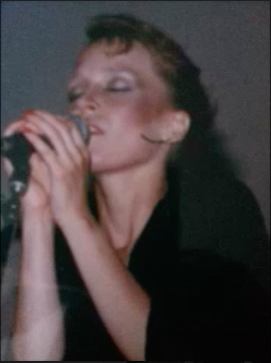 The A&R guys loved my voice and songs, but they said my band members should stay out of the mix, explaining they were way overplaying me. Then, I got a sold out gig in 1984 at Magiques, a huge venue uptown, which was the old Chippendales. My last recording with Miss Young came at Secret Society studio. Sandy came and brought Glen Kolotkin, the famed sound engineer, to produce us. Tony Machine played the drum machine. The music sounded a bit like Annie Lennox and The Eurythmics. Working with so many professionals gave me the opportunity to realize I might have to do it myself.
The A&R guys loved my voice and songs, but they said my band members should stay out of the mix, explaining they were way overplaying me. Then, I got a sold out gig in 1984 at Magiques, a huge venue uptown, which was the old Chippendales. My last recording with Miss Young came at Secret Society studio. Sandy came and brought Glen Kolotkin, the famed sound engineer, to produce us. Tony Machine played the drum machine. The music sounded a bit like Annie Lennox and The Eurythmics. Working with so many professionals gave me the opportunity to realize I might have to do it myself.
I never really got a chance to shop that tape around, because I decided to break up the band and leave Bruce, my boyfriend of nine years. They stayed together for only a short time, as they had no singer-songwriter. I had been the one doing that, along with the PR, going up to record companies, getting gigs, and paying for everything. In fact, I was the band, and the leaders in the music industry made sure I was aware of that.
It wasn’t long before I met a drummer, who was a barback at The Palladium, who would later become my husband. The dance music I was listening to prompted me to do electronic music with no blaring guitars. In 1985, we moved to London with all of our musical equipment: ten heavy aluminum instrument cases carrying drums, synthesizers, and a sampler. We stayed in South West London with friends, and I worked at Harrods Department store.
My now-husband Artie got depressed because of the rain, and because of an incident where he had rented out his equipment and had it stolen – the band never brought the gear back or paid the rental fee! Then, more bad news: we lost more of our prized equipment due to its improper use by others.
We returned to New York City and our old jobs, and tied the knot. Once again, we earned enough to purchase equipment to try to find a producer to record my music. I decided to buy my own studio with my husband, and I wrote the song “Call On Me” in 10 minutes. I had met Juan Cano, who was working at Sam Ash on 47th Street. When he heard the song, he decided to produce it on an 8-track in his basement apartment in Jersey City. What a great song! I knew it could be a hit.
I promptly went to the A&R people who signed artists to that genre like Sleeping Bag Records, and happened upon Eddie O’Loughlin at Next Plateau Records (Salt n’ Pepa) who along with the other companies went nuts over the song. I got signed with Next Plateau and Eddie chose Mickey Garcia and Elvin Molina (Mic Mac Records) to do the production. I continued writing while waiting for the record to come out.
However, by now, Chicago House music was the new thing. I wrote great songs in that genre, and found a great producer, D. Guillaume, who knew House well, but Eddie wanted that hit song of mine that never left his head, even while he slept. I refused. I guess you could say that I moved on with the dance scene.
The last collection of songs I wrote and got produced were in a studio in Forest Hills, Queens in 1989. You couldn’t believe what this guy, David T., from Soviet Georgia could produce on my 4-track! My heart poured out in those songs. In the same year, I got a great uptown producer named Jeff to do another four songs I wrote which were so utterly depressing, I admittedly couldn’t bear to shop them around. But boy, the production was killer, with a kind of The Motels sound.
I see myself copyrighting my material after production. Then, I can find the people necessary to play and perform the best of them. I may not use all of the songs, depending on what the band likes. I know that each member has to feel comfortable and like the lyrics and style. That’s why I like to write a lot of songs. More to pick and choose from.
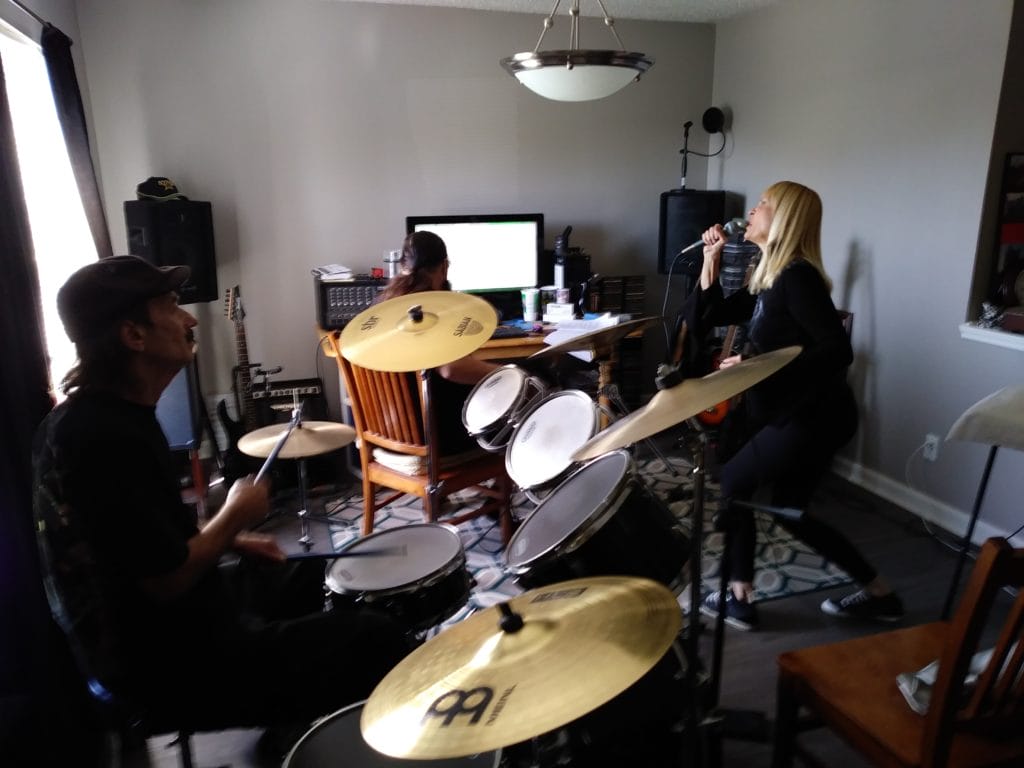 I decided to do heavy metal and nu metal music as a result of my husband Artie’s influence. He is a real heavy metal and mosh pit person. I had actually never listened to this music before I met him – in fact, I barely listened to music at all in the 90’s. Going through a master’s and doctoral program were enough.
I decided to do heavy metal and nu metal music as a result of my husband Artie’s influence. He is a real heavy metal and mosh pit person. I had actually never listened to this music before I met him – in fact, I barely listened to music at all in the 90’s. Going through a master’s and doctoral program were enough.
However, when the millennium came, I got into Seether, Breaking Benjamin, Papa Roach, Nirvana, Smashing Pumpkins, and every other alternative band. I started attending concerts again to catch up. Boy, I had missed a lot!
I can’t believe the state of current society, and metal allows me to act out my rage. I find it funny how friends and family react to such an older woman outrageously singing and performing. I’m a real friendly, happy person, and metal lovers who know me can’t believe my other side. Moreover, singing in such a manner affords me a lot of fun. My vocals have power and I get to use it!
I came across the website recently, when I broke my foot and had to sit all day. I have a strong work ethic, even though I’m retired. I decided to use my time wisely and get ear training, so I typed that into a search engine and up came your site!
I figured with this skill, I can get fellow musicians to play my songs in the future, even if they don’t know theory. I now live in San Antonio – this is not NYC, where excellent session musicians or anybody at the music building can play a song immediately.
The site instantly helped me, and I have started practicing to discern intervals by ear. By playing and noticing the chords on the synth, the repetition leads me to identify chords and actually be able to play them quickly.
Q: Ear training and especially interval recognition are such useful tools – we’re so glad Musical U is helping you hone these skills.
Lastly, please share any other career, creative and/or musical advice to other musicians.
My best advice to singers is to keep yourself in full voice. I do it easily by singing all day. Also, have melodies in your head as much as possible. I don’t mean to be neurotic, but if one wants to sing on pitch and be ready, you have to practice your skill. Singing only during rehearsal three times a week will not help you, just as dancers cannot expect to do four pirouettes whenever they feel like it. But – be careful not to strain your voice. Don’t overuse it.
For songwriters, my first piece of advice is to pick your genre and sound. Write a collection in that specific style. Do not hand over a demo with one reggae song, one metal, and one alternative. Know your market!
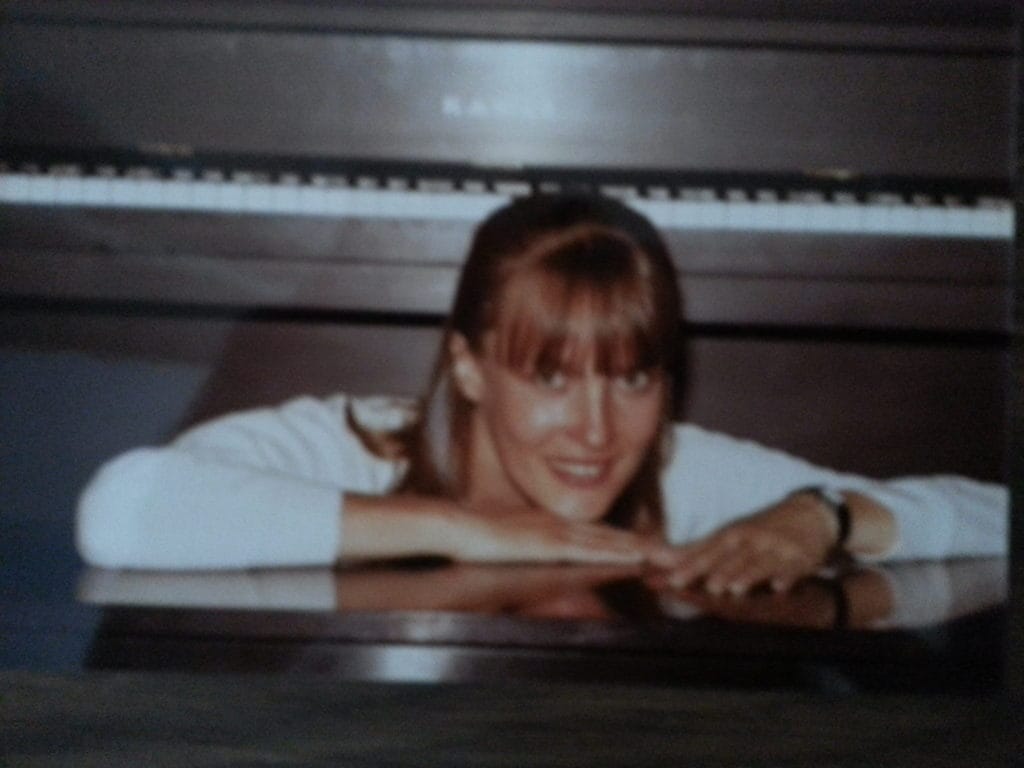 Then, audition players. Find themes you have passion about and write, write, write! Bring a recorder wherever you go, so you don’t forget the lyrics and melodies. Research other bands’ success stories. Define what success means to you. Then, decide which route you want to take. Do you want to play out and get a following? Do you want to promote and sell yourself online? Do you want to tour? Do you want to sign to a record company to promote your band?
Then, audition players. Find themes you have passion about and write, write, write! Bring a recorder wherever you go, so you don’t forget the lyrics and melodies. Research other bands’ success stories. Define what success means to you. Then, decide which route you want to take. Do you want to play out and get a following? Do you want to promote and sell yourself online? Do you want to tour? Do you want to sign to a record company to promote your band?
Document everything. Get four songs for a demo to shop around. Anything is possible, so do what Nastassja Kinski (the model/actress) once told me: “Just Do It!” Keep your eye on band members. Are they dedicated like you, or along for the ride? Everybody must play their part.
Most importantly, remember to get feedback from professionals! And remember… no two stories are the same.
I hope this advice and Musical U get you motivated. I want to wish you all the best of luck, and thank you, Musical U for giving me this opportunity to share my experience!
Writing Your Own Success Story
Phew! Diane’s story was an incredible whirlwind – from her time as a teenager going to shows in downtown New York City, to honing her musicality, to starting a band, to writing music solo and learning to promote herself.
Now, having found an outlet for her music and lyrics in the form of the energetic nu metal genre, exciting things are in the works for Diane – who knows where her musical journey will take her next?
As Diane learned over the course of her incredible career, taking your music into your own hands is incredibly important for achieving long-term success and satisfaction with your own work. Learn how you can do the same with Musical U!

